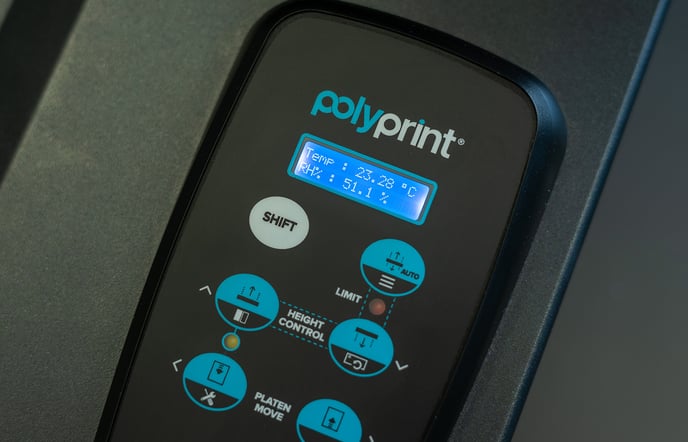The optimal environmental parameters for your DTG business. What impact the humidity and temperature can have on your dtg printer and equipment, and why to keep those parameters stable.
The key to starting a successful DTG business is to be fully informed about all the variables that are significant to the whole process. One aspect to acknowledge is how critical the proper temperature and humidity levels are and the impact that they may have on the printing process, as well as the quality of the final product.

Temperature conditions
DTG printers preferably operate at (10- 30°C) room temperature, the ideal being about 20°C.
Operating the printer in temperatures below that mark, can cause a change in the consistency of the inks, as their viscosity will start increasing. The inks’ pigment will form sediment, which is hard to redisperse, and the jettability will be compromised, leading eventually to clogged nozzles and issues to the ink flow. The same applies to the pretreatment liquids, as their formulation is prone to sedimentation, causing agglomerates that demand heavy shaking in order to dissolve. Those bigger particles can also end up blocking the nozzles of your pretreatment machine, resulting this way in frequent change and of course, added cost.
Regarding high temperatures, if your ink supply system is placed at a higher level than your printhead – gravitational system – the inks can be influenced, as they will have a higher viscosity, which can cause leaking from the printhead’s nozzles.
As far as curing equipment, whether you use a heat press or a tunnel/oven dryer, these machines require stable high temperatures for successful garment curing, so make sure that they are not subjected to rapid temperature changes (i.e., an open window). The placement of the equipment should not be right next to the printer nor the pretreatment machine. High temperatures alter humidity levels and dry the inks, creating ink flow issues that can have a serious impact on the printhead. It, also, polymerizes the pretreatment liquids, causing clogging issues in the tube system, that could result in uneven spraying.
Note: Don’t operate your dtg equipment in outdoor spaces and don’t expose it in direct sunlight. The parts can overheat or get damaged.
Tip: Use a heater or an air conditioner to stabilize the temperature of your workspace. Make sure, though, that you have adequate ventilation.
Humidity conditions
DTG printers can operate properly between 30-70% humidity level, but the ideal humidity level that we propose for high quality DTG printing is about 55%.
If the air is too dry at your printing station, then you will experience the same unpleasant results, such as dry inks and a demand for more frequent cleaning cycles. If you are working on low humidity levels, there is always the risk of permanent nozzle loss.
Tip: The use of a humidifier can come in handy, in order to maintain the humidity levels at bay. For the opposite scenario, where the humidity is very high, you can install a dehumidifier. Beware, though, not to decrease the humidity level to a very low point.
In case of using a humidifier and you store your garments in the same room, where you have placed the humidifier, the fabrics can absorb the extra humidity of the environment. To avoid print quality issues, press your garment 5 to 10 secs prior to pretreating/printing, in order to let the humidity out and let it evaporate.
Note: It’s better to store your garments separately from the humidifier. If you pretreat your garments and you store them in the same room where your humidifier is, then, even after pressing them prior to printing, there is a high chance that your end result will not be as expected.
Now you can understand how crucial those environmental parameters are and how much they can affect the printing quality.
-1.png?height=120&name=Polyprint%20Logo%20(Dark)-1.png)